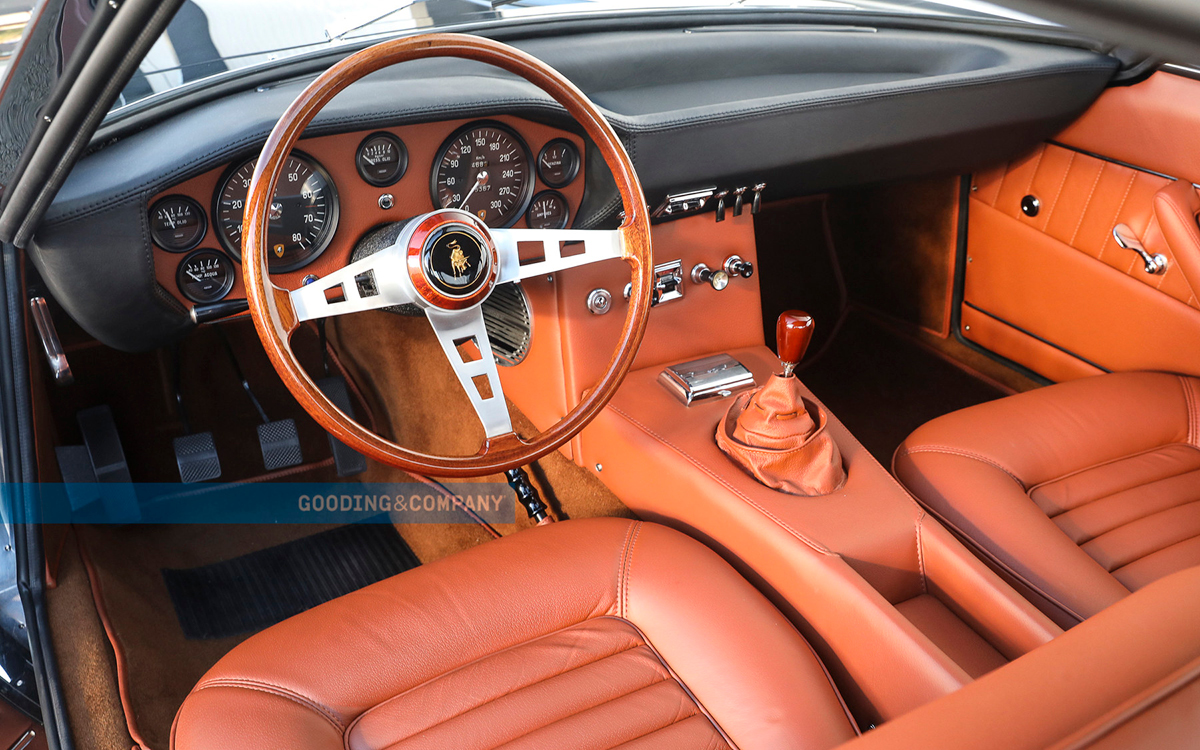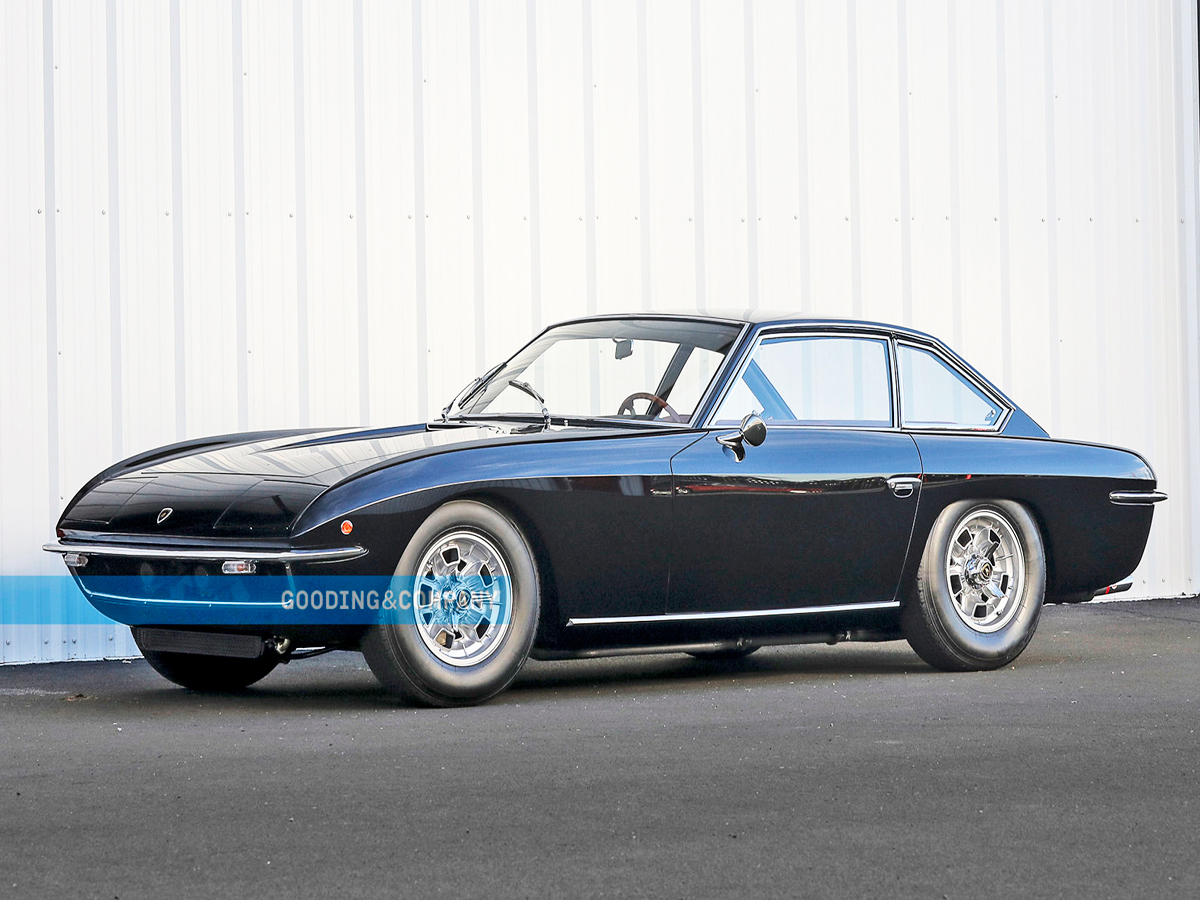Bull Market Incognito
The Lamborghini Islero could probably win a trophy for the classic exotic most likely to be mistaken for something else. Debuting a year after Lamborghini’s wild Miura supercar, the Islero shared the spotlight at the 1968 Geneva Motor Show with the marque’s new spacey looking four-seater Espada. The Espada got more attention and would be built until 1978.
Two people said to show the Islero plenty of love, though, were company boss Ferruccio Lamborghini and his brother, Edmondo. And, after stepping out of his roll as “The Saint” and driving a Volvo 1800S, actor Roger Moore drove an Islero in the 1970 thriller, “The Man Who Haunted Himself.”
Gooding & Company will offer a restored 1968 Lamborghini Islero at its Amelia Island auction in March, with a pre-sale estimate of $400K-$500K.
There’s more to unpack about this under-the-radar grand tourer.
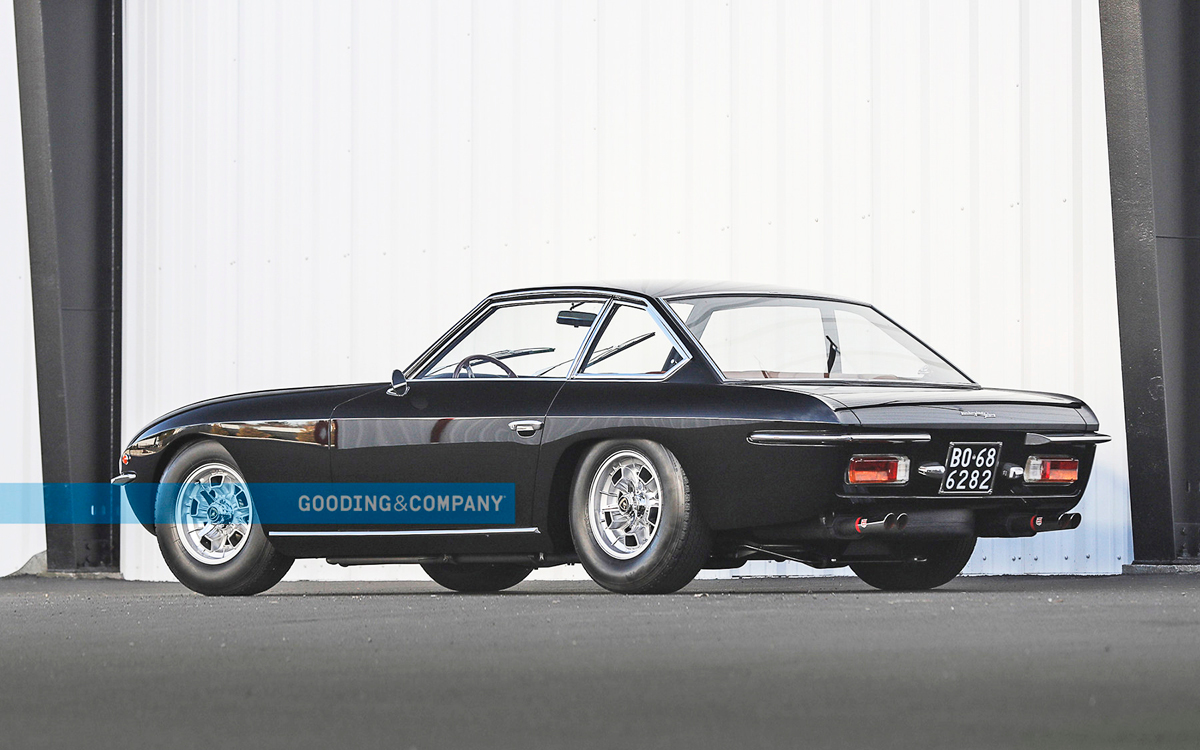
Rooted in Lamborghini History
If you’ve never seen a Lamborghini Islero outside of a concours event or an auction, it’s because there weren’t many made — just 225 for 1968 and 1969. Contrast that with the 9,233 vehicles Lamborghini sold globally from January-December 2022. It’s a different world, for sure.
The world of Automobili Lamborghini began in 1963, when successful farm-tractor magnate Ferruccio Lamborghini decided to take on Ferrari with the exquisite 350 GT. The first Lamborghini came packed with provenance for a newcomer. The chassis design came from Gianpaolo Dallara, who would go on to design F1 and Indy racecars. The 3.5-liter, 320-horsepower V-12 was the work of Giotto Bizzarrini, who had been Ferrari’s chief engineer before leaving to start his own company.
The 350 GT’s body design and construction emerged from Carrozzeria Touring, whose patented superleggera(super light) body construction used a frame of small-diameter steel tubes outlining the body, which was made from light aluminum panels that then add strength to the frame. There is still a separate steel chassis.
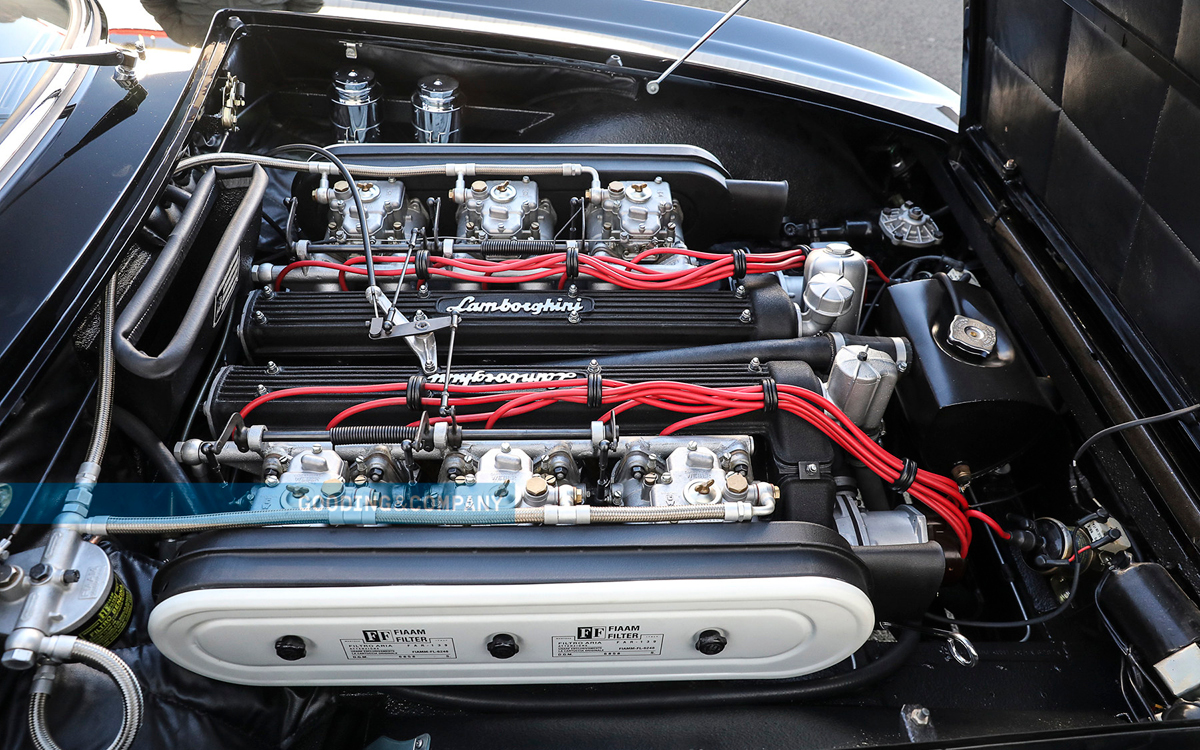
Evolution of the Bull
The Lamborghini 350 GT was competitive with top Ferrari models from the start. After building 120 of this inaugural model, Lamborghini upsized the V-12’s cylinder displacement to 3.9 liters and changed the car’s name to 400 GT. The first couple-dozen used the 350 GT’s two-seat body, and then another 224 featured a redesigned roofline to help accommodate 2+2 seating.
The Islero was essentially a re-bodied 400 GT. Its 100.4-inch wheelbase was a tad on the short side for a 2+2, but, as with other 2+2 cars, it probably helped some customers justify the purchase over a “selfish” two-seater. The Islero carried over the 400 GT’s aluminum 3.9-liter 325-horsepower V-12, a DOHC design using six carburetors, like top Ferraris. It also kept the five-speed manual transmission and was good for 150 mph.
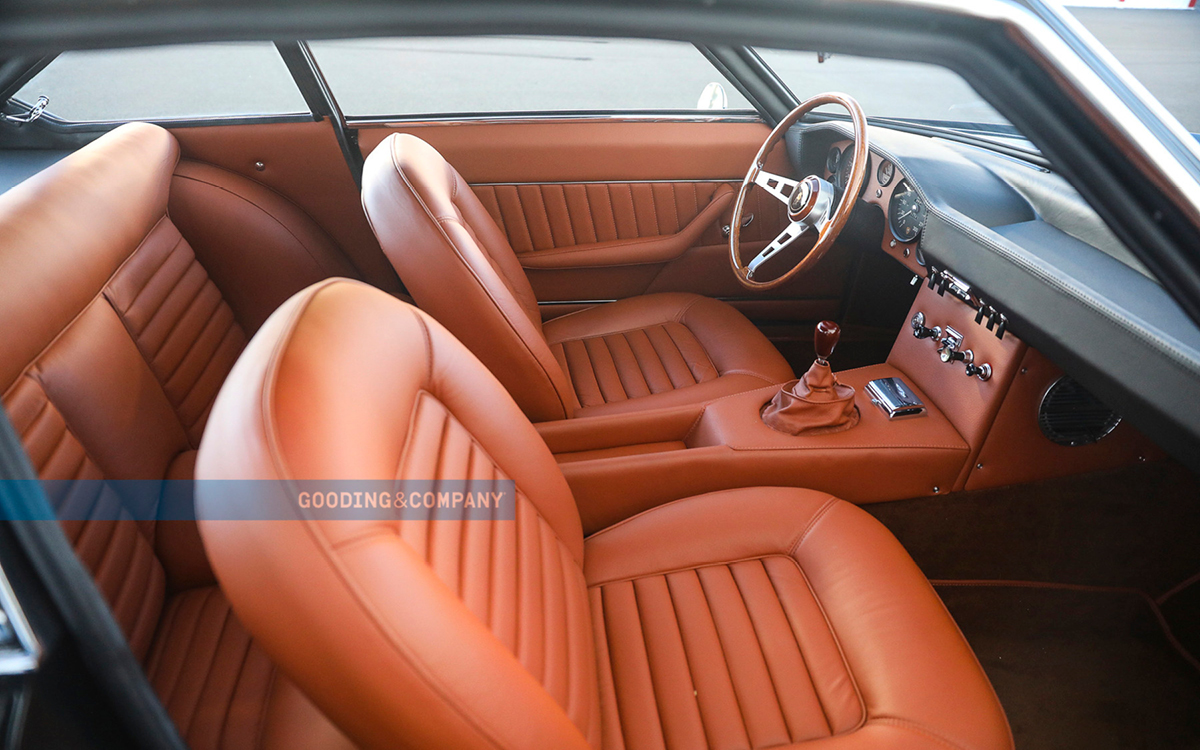
When Decades Collide
The Islero’s biggest departure from the 400 GT was of course visual. The older car’s curvy lines echoed its early Sixties development. Lamborghini fans may know that the 350/400 GT’s original design proposed by Touring used pop-up headlights to give the car a super-low profile. Consequently, the V-12 would not fit under the hood. The solution, using two bulbous pods each housing a pair of headlights, seemed inelegant to some.
As it happened, Carrozzeria Touring had closed in 1967. A former employee, Mario Marazzi started a new company with other ex-Touring people, including designer Federico Formenti. The new group worked with Lamborghini to develop the Islero and build the bodies. The crisply tailored coupe looked nothing like the car it replaced and, finally, got the pop-up headlights needed for a plunging hood line.
The Islero’s clean shape seemed to deftly update Sixties themes while presaging the more angular trends of the Seventies. It’s easy to see why Ferruccio and his brother preferred the Islero over other Lambos. Lamborghini built 125 first-series Isleros and then 100 Islero S variants with a 350-hp version of the V-12. The 1971 Jarama was considered its replacement.
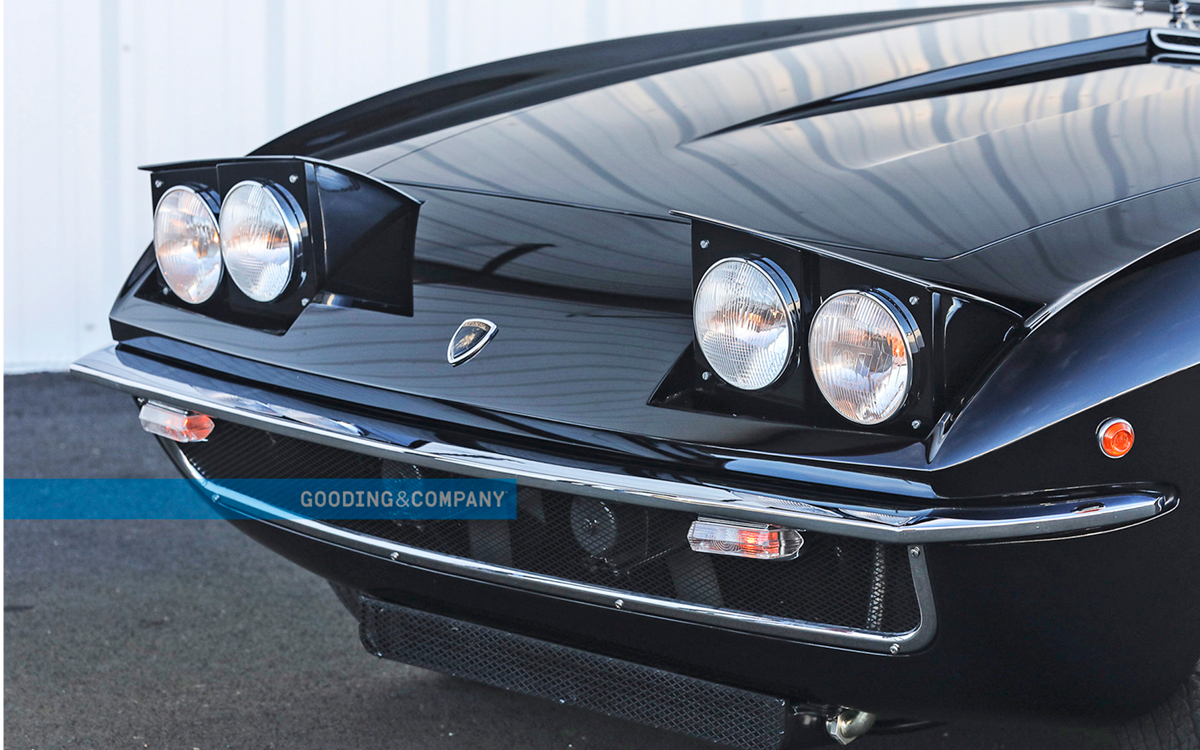
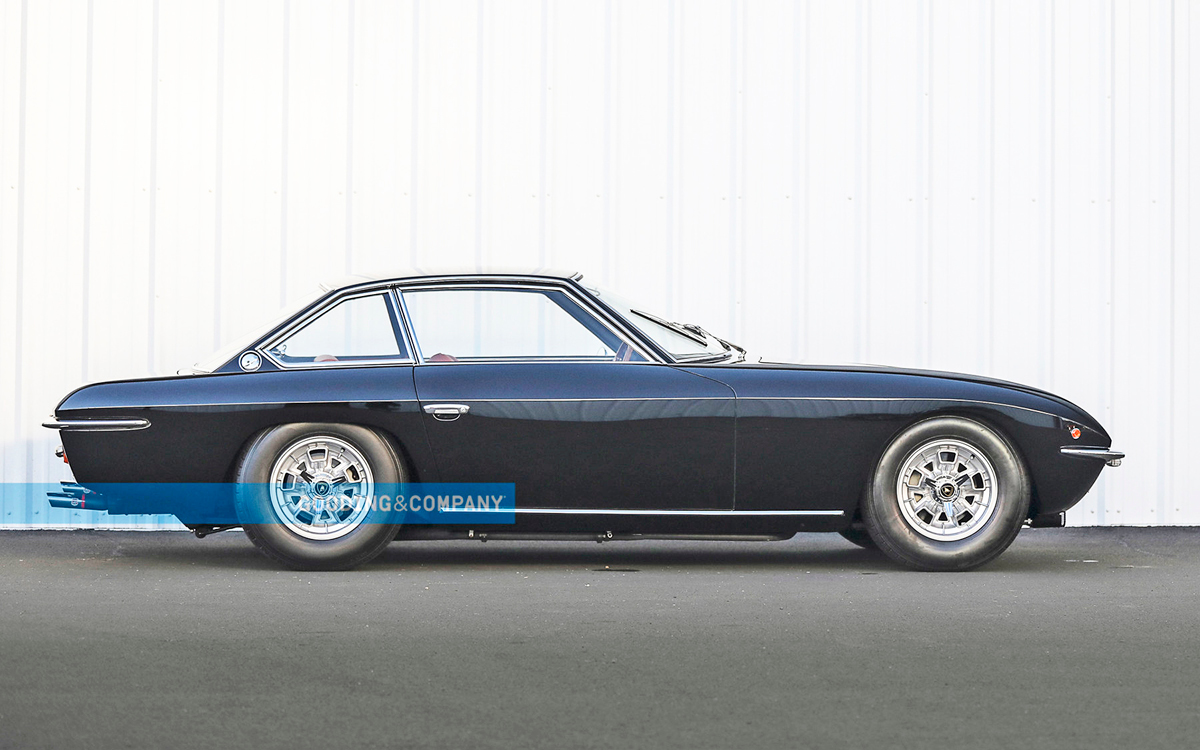
What’s in a Name?
Following Lamborghini’s then emerging penchant for naming cars after famous fighting bulls, the Islero disturbingly inherited its name from the bull that had killed matador Manuel Rodriguez in 1947. After announcing his retirement, Rodriguez agreed to one more season. Bad choice. His last battle was with Islero, from the Miura strain, which gored the matador to death as he plunged his sword into the beast.
Restored and Ready
After you’ve recovered from that little ray of sunshine, have a good look at the 1968 Lamborghini Islero offered by Gooding & Company. This car began life painted Metallic Light Blue over a tobacco leather interior. A San Diego dealer that later bought and imported the car in 1973 closed its doors shortly after, and the Islero ended up in storage until 1980. The car had two more owners until the consignor acquired it in 2010.
The car then went through a comprehensive restoration, which included replacing the engine block and changing the color to black. The car has been displayed at The Quail, A Motorsport Gathering and at the 2017 Amelia Island Concours d’ Elegance.
After the experience of driving an Islero, the most fun of owning an Islero might be telling people, “Yes, this really is a Lamborghini.”
